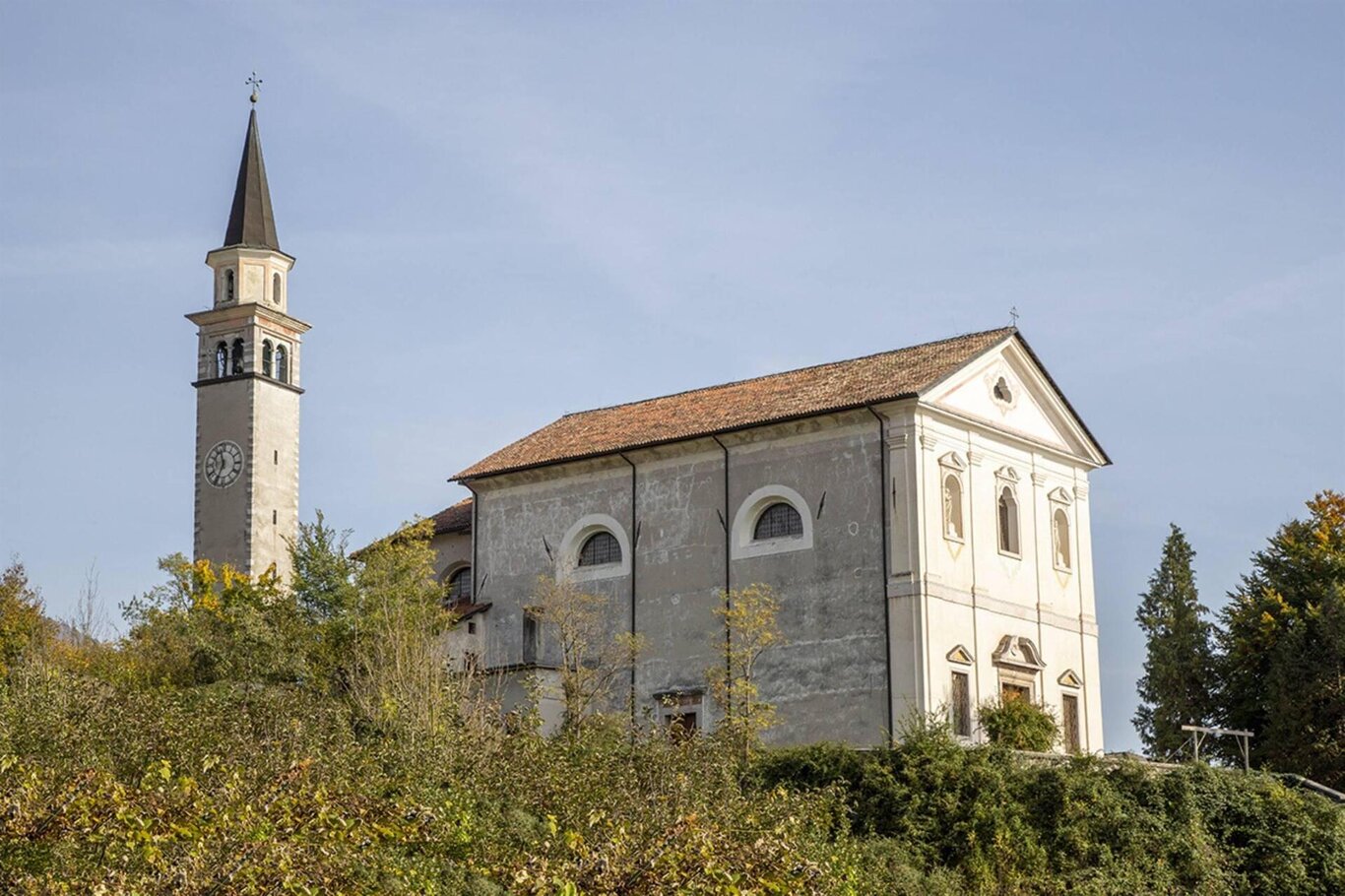Over the centuries, there have been numerous references to the chapel of Pedavena, one of the six directly dependent on the Cathedral of Feltre, in the episcopal documents describing the pastoral visits to the various churches in the area.
Thus, in 1587, Bishop Rovellio cites the altarpiece of the main altar, created by a young Francesco Frigimelica, one of the few elements still present today from the ancient church rebuilt starting from the mid-eighteenth century based on a project by Antonio De Boni and consecrated on September 18, 1768.
Architecture
The church was rebuilt starting from the mid-eighteenth century by the emerging Feltrino architect Antonio De Boni, a student of Francesco Maria Preti and designer of the churches of Villabruna and Quero.
The nave is wide and bright with four side altars; the decorative elements, such as those in stucco, still refer to Rococo models, while the division of the spaces now looks towards the newly born Neoclassical style, as seen, for example, in the capitals that support the cornice and frame the side chapels.
Works of Art
The main altar preserves the Nativity altarpiece created at the end of the sixteenth century by a young Francesco Frigimelica, a Belluno painter who left many testimonies of his art in the churches of the Belluno area. On the walls of the presbytery, a small canvas depicting the Passing of Saint Joseph painted in the eighteenth century by an anonymous artist hangs on the left, while on the right, one can admire a seventeenth-century Sacred Conversation with six saints surrounding the central figure of the Madonna.
The apse is dominated by an imposing baldachin that contains a representation of the Trinity created by Sebastiano De Boni, son of the architect Antonio, designer of the building. A painting by Antonio Crico from the second half of the nineteenth century, featuring the Madonna with Child, Saint Anthony of Padua, and Saint Charles Borromeo decorates the left wall of the nave, while directly opposite is a Deposition from the Cross attributed to the Veronese painter Antonio Balestra.
